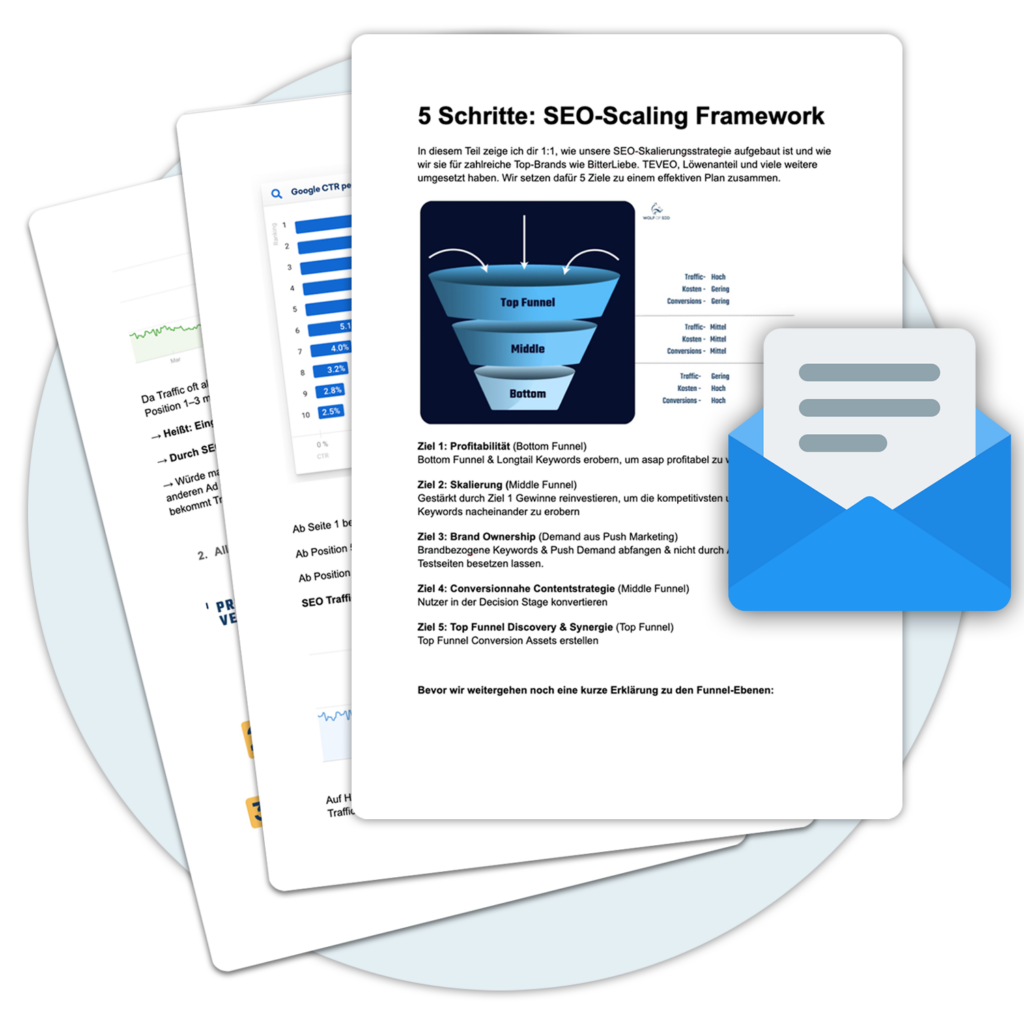« Back to Glossary IndexThe
hreflang-Tag ist ein wichtiges Element im Bereich der Suchmaschinenoptimierung (SEO). Er ermöglicht es Webseitenbetreibern, den Suchmaschinen mitzuteilen, in welcher Sprache und für welche Region ihre Inhalte optimiert wurden.
Durch die Verwendung des
hreflang-tags allows search engines such as Google to select the most relevant version of a website for users in different countries and languages. This can help the website to be better positioned in search results and therefore attract more traffic.
Traffic generated.
In order to
hreflang-tag correctly, it is important to know and understand the standard Hreflang values. You should also know how to use specific hreflang values and adapt them to different countries and languages. By looking at case studies on the use of hreflang, you can also learn what positive effects the use of this tag can have.
In this article, we will take a closer look at the hreflang tag and find out how to use it correctly. We will also look at the importance of the tag for SEO and possible errors that can occur.
The importance of the hreflang tag for SEO
The hreflang tag plays a crucial role in terms of search engine optimization (SEO). It enables search engines to identify and index the correct language version or country variant of a website. This is particularly important for companies that operate internationally and offer their content in different languages.
Without the hreflang tag, there is a risk that search engines will see the different language versions of a website as duplicates or duplicate content, negatively impacting the visibility and rankings of the website. By implementing the hreflang tag correctly, such problems can be effectively counteracted.
Do I need the x-default hreflang tag ?
The
x-default hreflang tag, Google is basically saying, "Hey, if you don't know exactly which language version of a page to show a user, just use this one."
So when is it useful?
- International landing pages:
- Imagine you have a global brand, and someone from a country for which you don't have a specific language version visits your website. For example: you have a Spanish, English and German version, but someone from Russia comes by. Here the
x-default tag will help and redirect the user to a general (often English) page.
- Language selection pages:
- The
x-default can link to a page where the user can select their own language. It's like when you go to a restaurant and the waiter says: "Do you already know what you want, or would you like to see the menu?"
- Search engines without hreflang support:
- While Google thinks the hreflang tag is great, not all search engines do. The
x-default ensures that at least a reasonable page is displayed when the Search Engine is confused. Imagine giving someone directions to your house, but in case they get lost, you tell them, "If you're totally lost, just meet me at the big tree in the park."
When is it not so relevant?
- Only one language version:
- If your site is only available in one language, then you need the
x-default not. It would be like sitting in a restaurant with only one dish on the menu - there's no other option!
- No visitors from non-covered regions:
- If you are pretty sure that you will only get visitors from the regions for which you have language versions, then the
x-default perhaps not so critical. It's like opening a restaurant in Germany and only offer German food because you know that only locals come by.
In conclusion: The
x-default hreflang tag is like a safety net for your international SEO strategy. It catches all the visitors who don't fit exactly into your language target groups and directs them where you want them to go. So when you're playing with international content, remember this little lifesaver! 😉🌍🔗
How to use the x-default hreflang tag
Where do I insert it? You put the tag in the head section of your website, exactly where the other hreflang tags are. For example:
2. where do I insert it? You insert the tag in the head section of your website, exactly where the other hreflang tags are located.
For example:
<link rel="alternate" href="http://beispiel.de/" hreflang="de-de" /> <link rel="alternate" href="http://beispiel.com/en/" hreflang="en-us" /> <link rel="alternate" href="http://beispiel.com/" hreflang="x-default" />
In this example, the German version for
Germanythe English version for the USA and the
x-default version is the general (could be English, for example) for everyone else.
3. how do I determine which version is the "default"? Here comes the creative part! Think about which version makes the most sense in case someone from an unspecified country or with an unspecified language visits your website. Often it's the English version, since English is widely used. But it could also be a language selection page, where the user can decide for himself.
4. avoid common mistakes:
- Double use: Use the
x-default Day only once per page. He is the joker - but you can't draw him twice.
- Missing specific tags: Make sure you have set all other relevant hreflang tags as well. The
x-default is great, but it can't replace the others.
Example from practiceImagine you run an online store selling special teas. You have versions in English, French and German. A customer from Italy visits your site. Since you don't have an Italian version, thanks to the
x-default tags, the general version (for example, English) is displayed.
What you should pay attention to with x-default hreflang tag
It is also important to make sure that the hreflang tags are implemented correctly and point to the corresponding URLs. The hreflang tags should be placed on the page they refer to and not on another page or in the footer of the website.
It is also a good idea to place the hreflang tags in the
Sitemap deiner Website aufzuführen, um sicherzustellen, dass Suchmaschinen sie leicht finden und indexieren können.
Ein weiterer wichtiger Faktor ist die Verwendung von eindeutigen und konsistenten Inhalten auf jeder Version deiner Website in verschiedenen Sprachen. Es ist wichtig sicherzustellen, dass der Inhalt auf jeder Seite in der entsprechenden Sprache verfasst ist und die Bedürfnisse und Erwartungen der Zielgruppe erfüllt.
Darüber hinaus solltest du sicherstellen, dass die URLs der verschiedenen Sprachversionen deiner Website strukturiert und konsistent sind. Zum Beispiel sollte die
URL der deutschsprachigen Version deiner Website mit „/de/“ beginnen, während die englischsprachige Version mit „/en/“ beginnen sollte.
Indem du all diese Faktoren berücksichtigst und den x-default
hreflang tag and hreflang tags correctly on your website, you can ensure that your website is available in the correct languages.
indexed and users in their preferred language.
The standard reflang values
The hreflang tag is an important tool to enable search engines such as Google to correctly assign websites to different countries and languages. It is used to make it easier for users to search for relevant content in their preferred language.
The default reflang values include the combinations of the most common country codes and language codes. Here are some examples:
| Country code |
Language code |
| de |
de |
| en |
us |
| fr |
fr |
| it |
it |
When using the hreflang tag, these default values should be taken as a starting point. However, they can be customized depending on the website and target group.
List of Hreflang values
The hreflang tag is used to tell search engines in which language and region the content of a website is available. There are various
Hreflang valueswhich stand for different languages and regions. Here are some examples:
| Language/Country |
Hreflang value |
| English (United States) |
en-us |
| German (Germany) |
en-de |
| Spanish (Spain) |
es-es |
| French (France) |
fr-fr |
It is important to use the correct Hreflang values for each language and region to ensure that the website is displayed correctly in the search results. Incorrect or missing hreflang values can lead to incorrect categorization of the content and thus reduce the SEO value.
Ranking influence negatively.
The use of specific Hreflang values
The use of specific
Hreflang values is crucial to ensure that the right page is displayed to the right users in the right countries and languages. Here are some important points to keep in mind when using specific hreflang values:
- Language combinations: You should use the right language-specific combinations to ensure that your pages are visible to the relevant target groups. For example, if you have a German page that is relevant for both German-speaking users in Germany and German-speaking users in Austria, you should use the hreflang value "de-de, de-at".
- Country and language variants: If you have different variants of your site for different countries and/or languages, it is important to ensure that the correct variant is displayed to users in the relevant regions. Therefore, use specific hreflang values such as "de-de" for Germany and "de-ch" for Switzerland to ensure that the correct variant is displayed.
- Language change: If you offer the option to switch languages on your site, you should ensure that the correct hreflang values are used to tell search engines which version of the page is relevant for which language. This will help avoid confusion and ensure that users see the correct version of the page.
By using specific hreflang values, you can ensure that your pages are displayed in the right regions and languages, providing a better user experience. Be sure to adjust these values carefully and check them regularly to ensure your pages are being displayed to the right users.
Positive effects of hreflang use
The use of the hreflang tag can have a positive impact on SEO.
Ranking and search engine optimization. Here are some of the key benefits of using hreflang:
- Better visibility in search results: Using the hreflang tag ensures that the correct version of a website is displayed in the search results for the relevant target group. This increases the likelihood that users will click on the link and visit the website.
- Increased user satisfaction: If users are looking for information in their preferred language or from their home country and they are shown the appropriate version of a website, they are more likely to stay on the page and interact for longer.
- Effective international Online Marketing-Strategy: By using the hreflang tag, companies can improve their international presence and target different markets. This can lead to an increase in the success of global marketing campaigns.
- Avoidance of Duplicate Content: If several versions of a website exist in different languages or for different countries, the use of the hreflang tag can help, Duplicate Content to be avoided. This prevents search engines from viewing the pages as duplicate content and the Ranking influence.
Summary and conclusion
With the hreflang tag, website operators can identify the language and geographical destination of their content. This improves user-friendliness and increases visibility in search engines. The hreflang tag is an important tool for international companies that operate in different countries and languages.
The correct use of the hreflang tag requires a thorough analysis of the target group and the market. It is important to set the specific hreflang values correctly for each country and language to ensure that users see the right content and that the pages are displayed in the right search results. Mistakes in the implementation of the hreflang tag can lead to confusion for users and affect the visibility of the website.
Case studies have shown that using the hreflang tag can have a positive impact on SEO performance. By accurately tagging content for specific languages and countries, website owners can improve their visibility in search engines and target their international audiences more effectively. It is important to continuously monitor the performance of hreflang tags and make adjustments where necessary to achieve optimal results.
Overall, the hreflang tag is an indispensable tool for internationally active companies that want to offer their website in different countries and languages. By using the hreflang tag correctly, users can see the right content and website operators can increase the visibility of their pages. However, implementing the hreflang tag requires careful planning and analysis to avoid errors and achieve optimal results.
« Back to Glossary Index







